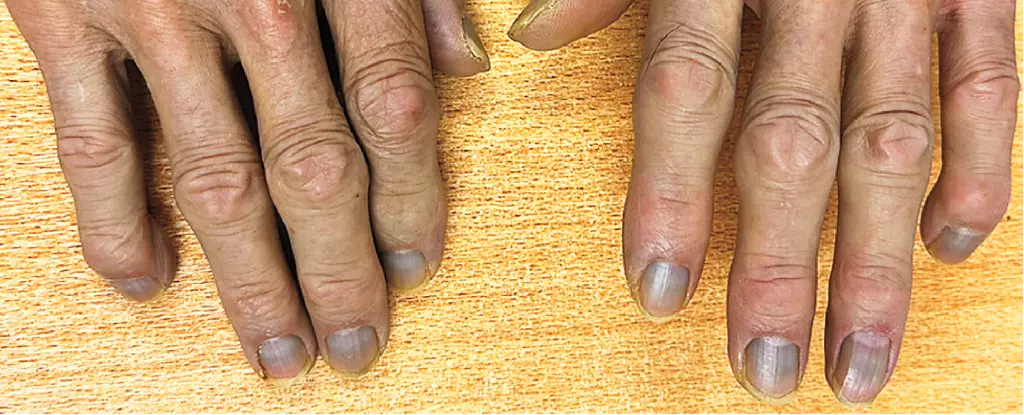An unusual case recently unfolded in a Hong Kong hospital, where an 84-year-old man presented with urinary flow obstruction. While clinicians were focused on addressing this primary issue, another perplexing symptom came to light: the patient exhibited an unusual grayness to his skin, eyes, and nails. This discoloration, reported to have been present for five years, piqued the interest of medical professionals, ultimately leading to a fascinating discovery that delves into the rare condition known as argyria.
Argyria is characterized by the systemic buildup of silver in bodily tissues, resulting in a distinctive blue or gray discoloration of the skin. It arises through various avenues, historically linked to occupational exposure among artisans and miners who worked with silver. In contemporary instances, however, exposure is often due to the ingestion of silver-containing products marketed for their health benefits. The patient’s blood tests revealed an alarming concentration of silver—over 40 times the normal level—confirming the diagnosis. Although argyria is a rarity, its occurrence highlights the persistent misuse of silver in over-the-counter supplements and treatments.
The rise of colloidal silver—a suspension of fine silver particles in liquid—represents one of the more controversial aspects of modern alternative medicine. Despite the lack of scientific evidence supporting its effectiveness for any medical condition, colloidal silver continues to be marketed as a miracle cure. The U.S. Food and Drug Administration has publicly warned against its use, emphasizing that it does not constitute a safe or effective treatment for any ailment.
When silver enters the body, it can be absorbed through various routes: inhalation, dermal contact, or ingestion. Once within the system, silver ions circulate as charged particles, depositing themselves in numerous tissues. The interaction with ultraviolet (UV) light leads to the transformation of these ions into reactive compounds, causing the distinctive skin coloration associated with argyria.
For the elderly patient in question, the question of exposure remains largely unanswered. With a professional background as a waiter, he lacked any immediate sources that could explain the massive silver accumulation. What’s more, there were no reports of similar symptoms in his community, making it unlikely that environmental factors played a role. As healthcare providers sift through possible origins, it becomes clear that the etiology of this case will remain a mystery—at least for now.
Despite the significant silver buildup in the patient’s system, experts agree that argyria typically poses no serious health risks. In most cases, the cosmetic implications of the condition are the most pressing concern. The grayish skin tone can have profound psychological effects, impacting self-esteem and social interactions. However, from a clinical perspective, those affected by argyria rarely experience any serious health complications, apart from minor potential issues with the absorption of certain medications, such as antibiotics and thyroxine.
Unfortunately for the patient, there are currently no known treatments to effectively eliminate silver from the body once it has accumulated. As the medical community continues to study the condition, the focus remains on monitoring affected individuals for possible health changes over time. Regular check-ups and blood tests can help track silver levels, ensuring that any potential harms arising from excessive accumulation can be addressed promptly.
The intriguing case of this elderly patient underscores the complexities surrounding argyria and the broader context of silver use in health products. As alternative remedies gain popularity, the importance of scientific scrutiny increases. Doctors and patients alike must remain vigilant, informed about the potential risks of seemingly harmless solutions. For this patient, a diagnosis has led to more questions than answers, but it also paved the way for ongoing monitoring that may eventually shed light on the true source of his unusual condition. Awareness and education will be vital in preventing similar cases in the future, highlighting the critical need for responsible use of any treatment that promises health benefits—especially those that involve metals like silver.


Leave a Reply